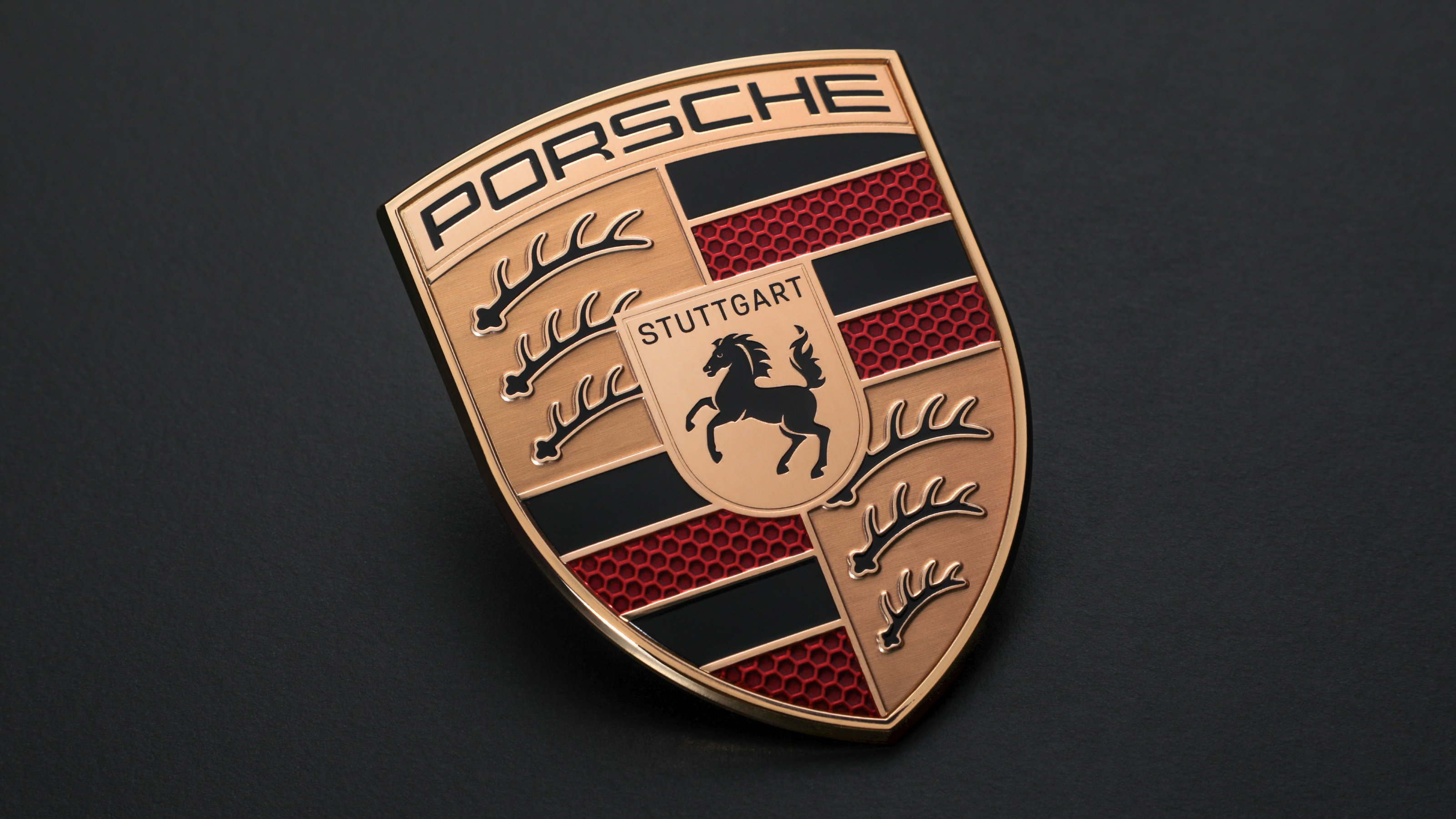
Michael Mauer, vice president of style at Porsche, has overseen the creation of a new Porsche badge, the latest iteration of a longstanding and ever-evolving symbol of sports motoring.
Ferrari isn’t the only company to have a rampant horse on its badge. Although the Italian stallion was originally associated with 1930s racing Alfa Romeo, Enzo Ferrari’s former team, it has been associated with Ferrari’s own cars since the first Ferrari 125 S of 1947.

The following year, a new sports car maker emerged from the ashes of post-war German industry. Porsche’s badge has more in common with traditional heraldry than its Italian counterpart. The horse comes from the flag of the city of Stuttgart (‘stud garden’, a name which gives away its horse-breeding history). The first badge bore the name of the company and its hometown, with the black and red colouring and deer-antler motif lifted directly from the shield of Württemberg-Hohenzollern, the state founded in 1945 and eventually becoming part of Baden-Württemberg.

This clearly Germanic symbol was partly due to influential car importer Max Hoffman, the man who brought Porsche to the USA. Hoffman wanted the new 356 sports car to better signal its origins, and the crest was drawn up in 1952, four years after the car debuted.
The draughtsman behind the logo was one Franz Xaver Reimspiess, an Austrian engineer responsible for much of the mechanical innovation behind the Volkswagen Beetle. Reimspiess was also rumoured to have designed the Volkswagen logo in 1936.
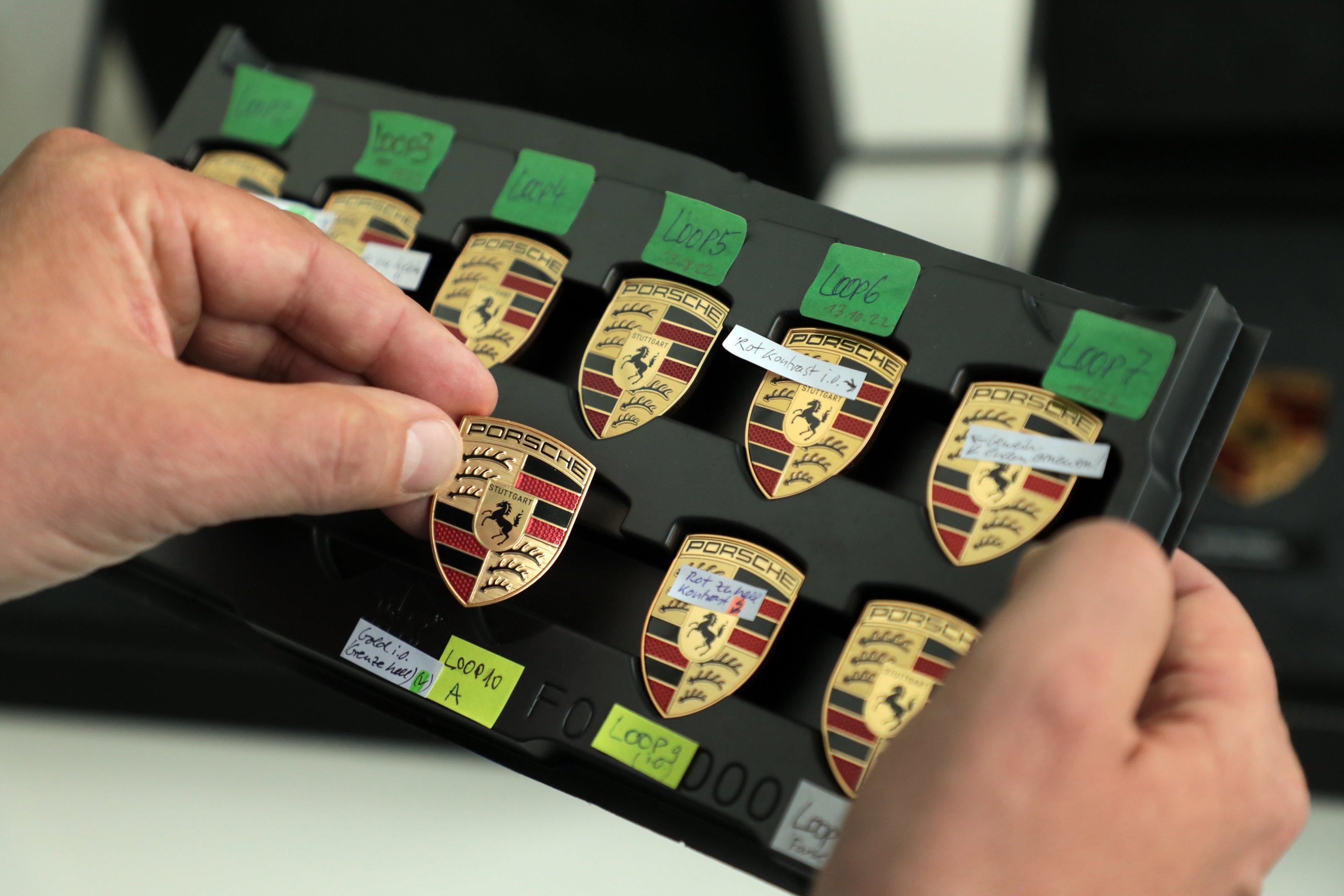
The new crest maintains the form and dimensions of the original but tightens up every element. ‘The “75 years of Porsche sports cars” anniversary was the occasion for us to fundamentally rework this trademark,’ Mauer says, ‘We reinterpreted historical characteristics and combined them with innovative design elements such as a honeycomb structure and brushed metal.’
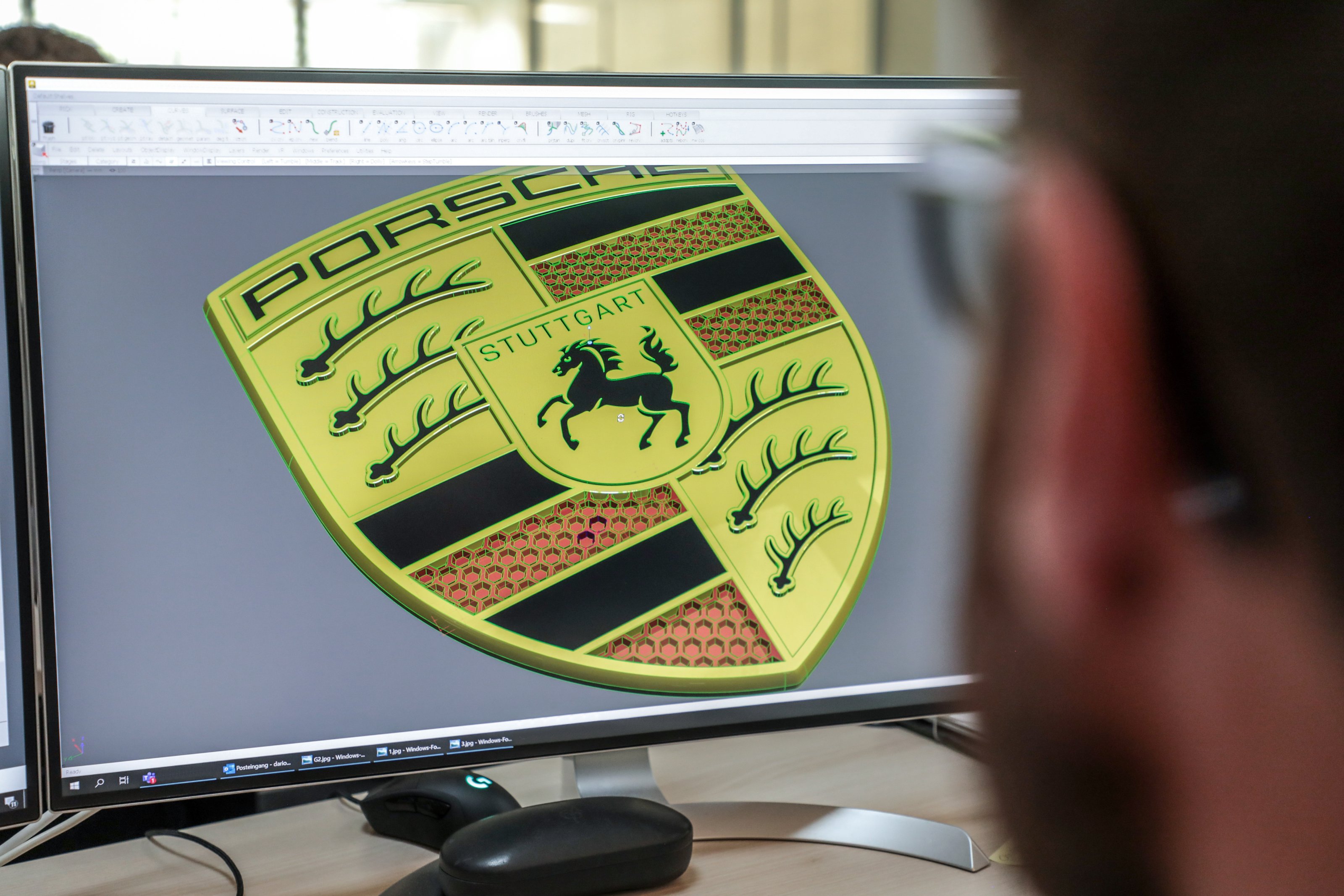
It's taken three years to shape this badge, both as a three-dimensional physical object to adorn the cars and as a 2D logotype that’ll been seen around the world both digitally and in printed matter. The process was overseen by Joachim Paetzel, specialist for colour and trim at the brand.
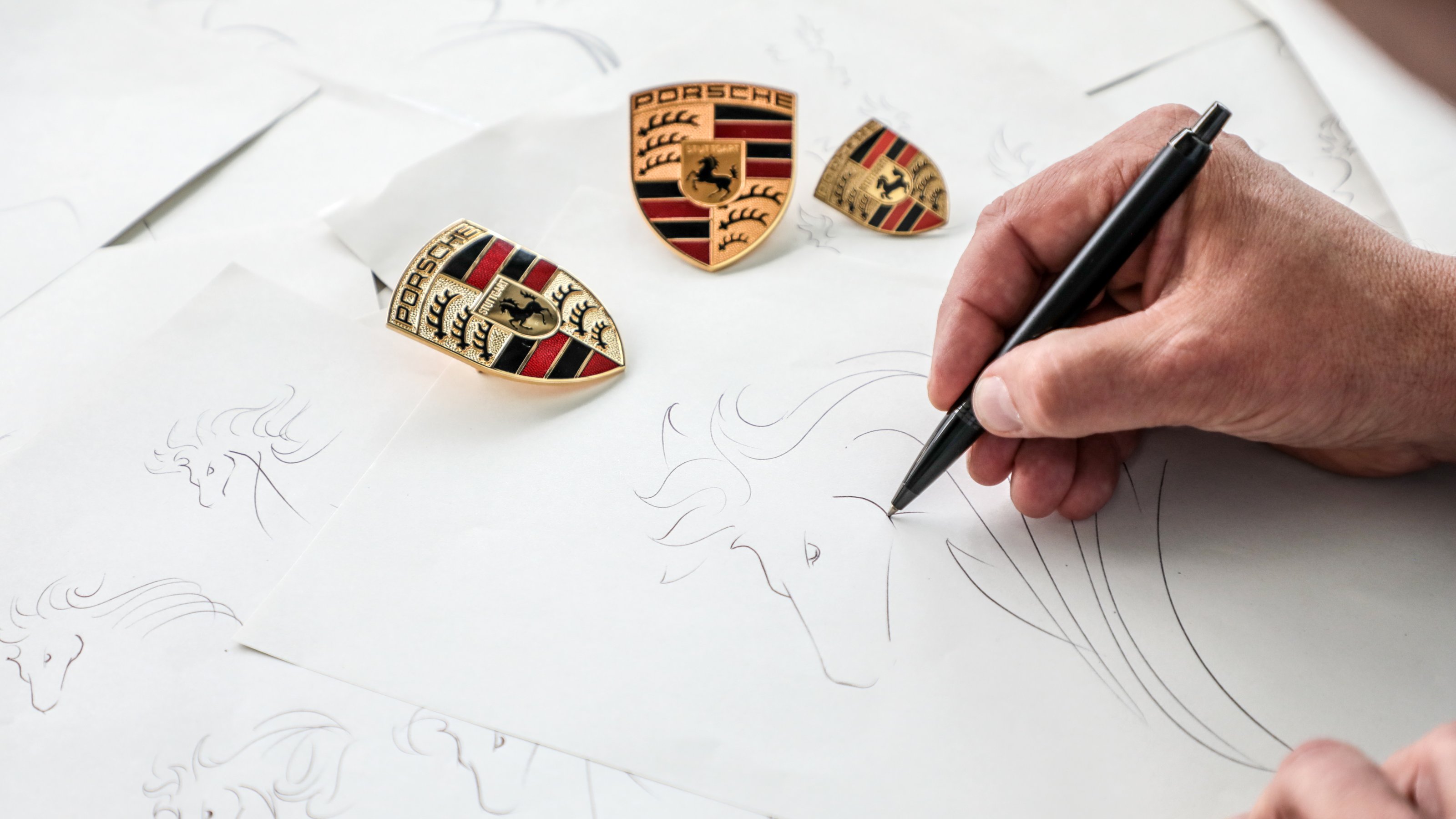
Every facet is different, included a softer coloured gold, a finely tapered bevel around the edge, the application of clear brushed metal surfaces behind the antlers and a new 3D honeycomb pattern for the red stripes. The word ‘Stuttgart’ now uses Porsche’s own typeface and the horse itself has been redrawn to be bolder and less stylised.
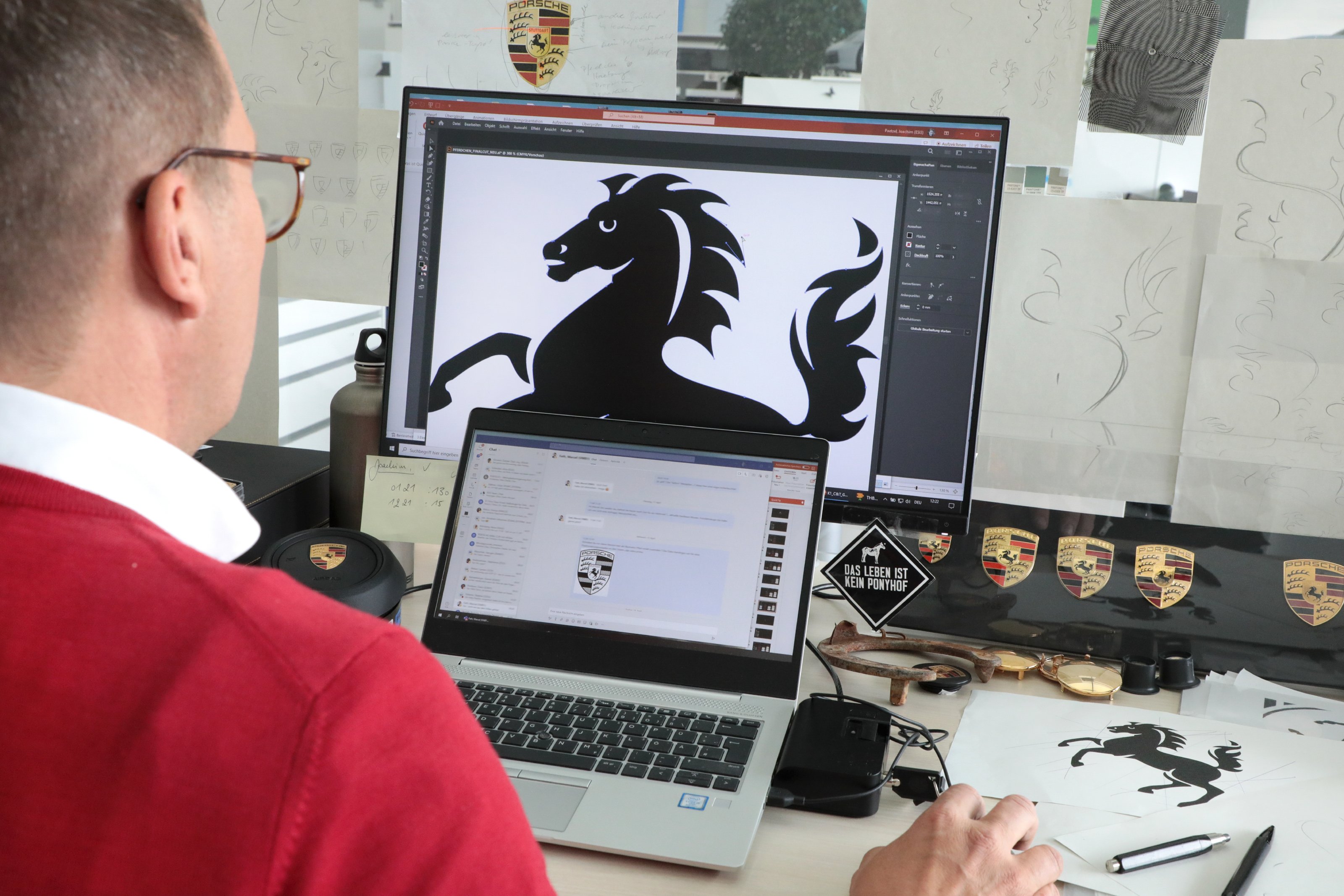
The original crest was given a refresh in 1954, then again in 1963, 1973, 1994, 2008 and finally in 2014. This new badge will make its debut on the new Porsche Panamera, due at the end of 2023. The company keeps historic badges in production, however, as the Porsche Classic restoration service needs to have access to every conceivable part. With 75 years of heritage to preserve, plus high hopes of at least another 75 to come, brand identities are precious enough to need continuous care.







